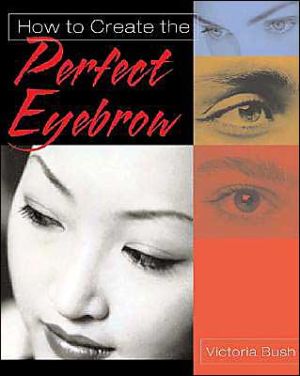

 |

|

The average rating for How to Create the Perfect Eyebrow based on 2 reviews is 4.5 stars.
Review # 1 was written on 2020-04-18 00:00:00 Rick Aiello Rick AielloThis book was an eye-opener. For what I have always known in the black community, I had no idea and to what extent this phenomena exists in the Asian community, especially among women. Very personal stories are shared, some shocking, all very poignant. |
Review # 2 was written on 2008-02-20 00:00:00 Candace Vodden Candace VoddenIn their book, Is Lighter Better?: Skin-tone Discrimination Among Asian Americans, Joanne L. Rondilla and Paul Spickard aim to explore colorism and its origins and effects on the Asian American community. Colorism is defined as "discriminatory treatment of individuals falling within the same 'racial' group on the basis of skin color" (2). In the Asian American community, colorism is shown through the emphasis on having pale skin and small facial features, whether it be through a parent's comments or through the personal experiences of an Asian American individual. Drawing upon other academic opinions and published papers, personal narratives, academic essays, oral interviews, a scientific survey and analysis, Rondilla and Spickard do an excellent job of thoroughly establishing that colorism is a tangible, modern issue and exploring the different ways it manifests in the Asian American community. However, though I found that the book is very well written and easily communicable, it failed to provide an in-depth discussion about colorism beyond the qualification of its existence and the examples given of ways in which it is present in the modern world. Is Lighter Better?: Skin-tone Discrimination Among Asian Americans skillfully places colorism in universal terms that everyone can understand. Rondilla and Spickard utilize other examples of colorism from varying races and social classes in order to really quantify colorism and to banish any doubt of its relevance, lending the book a more widespread relatability. For instance, Rondilla and Spickard state that "African Americans with lighter skin tone earn more money than darker African Americans. Lighter people complete more years of education. They have higher occupational status and so do their spouses" (11). Another aspect of the book that speaks to its accessibility is the style of writing. The prose is both fluid and argumentative without being overly complicated or pretentious. Unlike many other books that are academic in nature, the arguments presented in Is Lighter Better?: Skin-tone Discrimination Among Asian Americans are easy to comprehend and are more memorable. Even the structure and organization of the book speaks to this; the titles of each of the chapters and subchapters have no hidden meanings and allow the reader to follow the arguments without issue (such as chapter three's title "The Survey," which hints about the following discussion of the scientific survey completed). I appreciated that there was an explanation about colorism and why it is important in terms outside of how it affected specific individuals. Rondilla and Spickard placed colorism in economic and historic terms, outside the scope of superficially wanting to improve one's appearance or to just "look white," a common misconception often made by others. In addition to the aforementioned quote about African American colorism and its effects on their economic situations, Rondilla and Spickard stressed the historical importance of colorism. It is stated that "Laotianns have a term [that] refers to a dark peasant girl or a girl from the country or farmland. The term is often used to mean a stupid, clumsy, and uncivilized person" (8); thus, it can be seen that the connection between skin tones amongst Laotians as a less desirable quality originates in the past, so much so that it influenced the language. Another technique that Rondilla and Spickard utilized to place colorism outside of the emotional spectrum was the addition of palpable quantitative scientific data (in the form of a study). I felt that this effectively lent the issue of colorism more credibility in the eyes of the reader. However, although the book's writing style made it more accessible to those outside the academic sphere, it is almost too shallow in its analysis. It felt as if Rondilla and Spickard took the entire book to reiterate the same main points. For example, the entire sections on the beauty industry (namely lightening products and cosmetic surgery), though interesting, did not add any substance to the claim of colorism's presence already demonstrated, other than serving as additional examples. And if it did, the meaning was lost on me, perhaps due to poor communication. In addition, even though I liked that the accounts of how individuals personally experienced colorism in chapter 2 stood poignantly and powerfully alone, I would have liked to see them either lengthened or accompanied with short commentaries, for they were very short and I thought that they opened up an avenue for further discussion about the current perpetuation of colorism that was not really touched upon. Overall, I loved that the book was written in a clear, precise manner that was both argumentative and directional, but not arrogant and one-sided. It was written in such a way that the reader was able to understand colorism and its presence in many different spheres, ranging from societal judgments to individual insecurities to economic and scientific discussion. For me, the positives outweigh the faults I found in this book and I would highly recommend this as a read to anyone, whether it be for academic or recreational purposes, as I believe that colorism is something that should be more widely addressed and understood. |
CAN'T FIND WHAT YOU'RE LOOKING FOR? CLICK HERE!!!